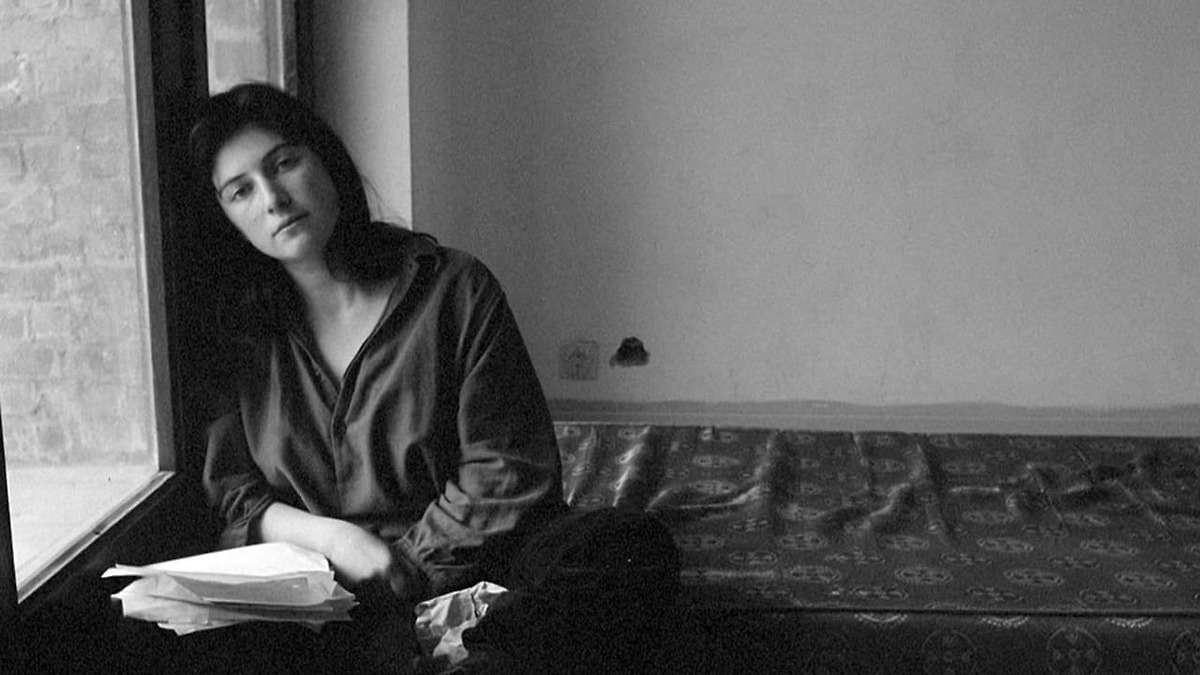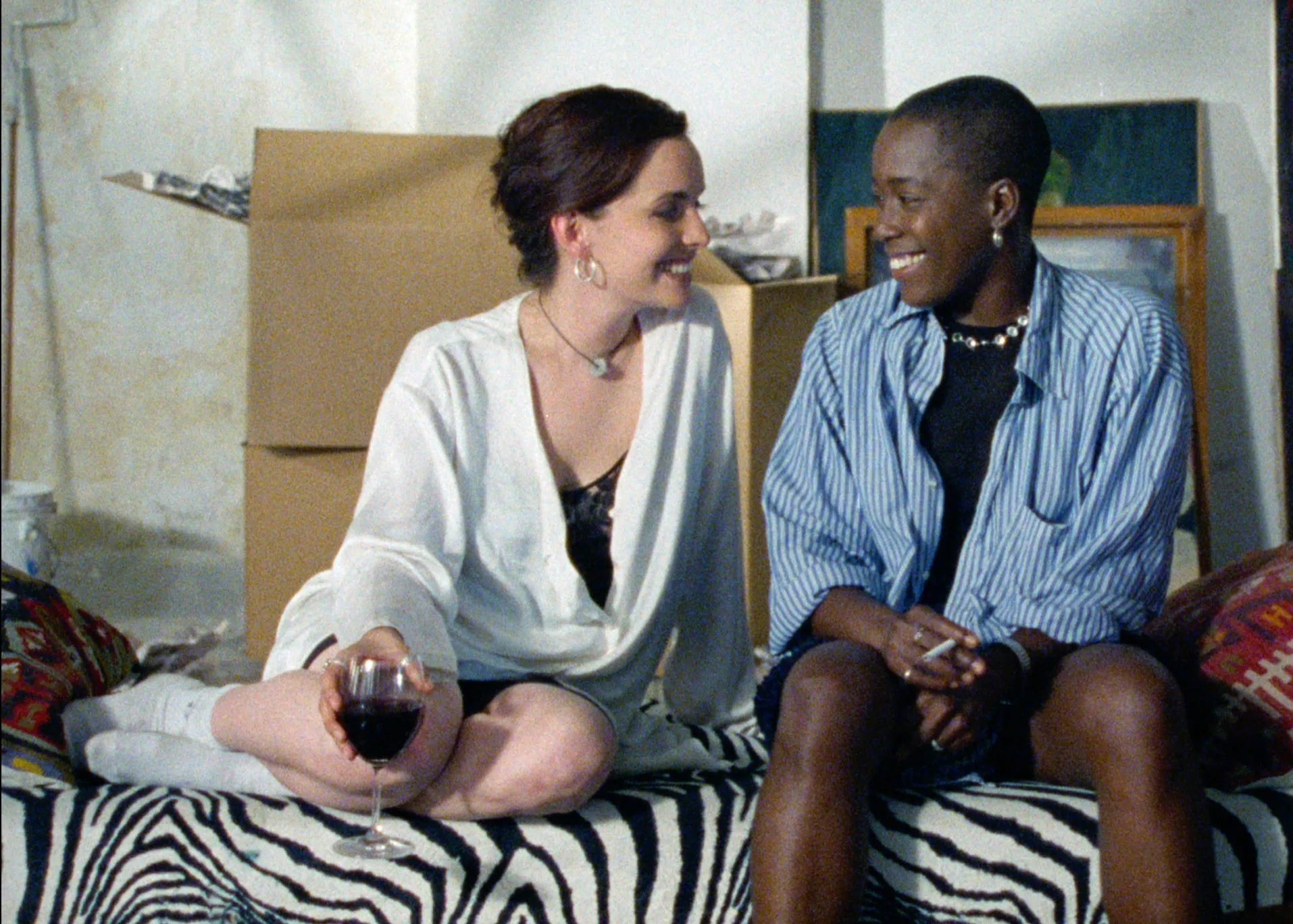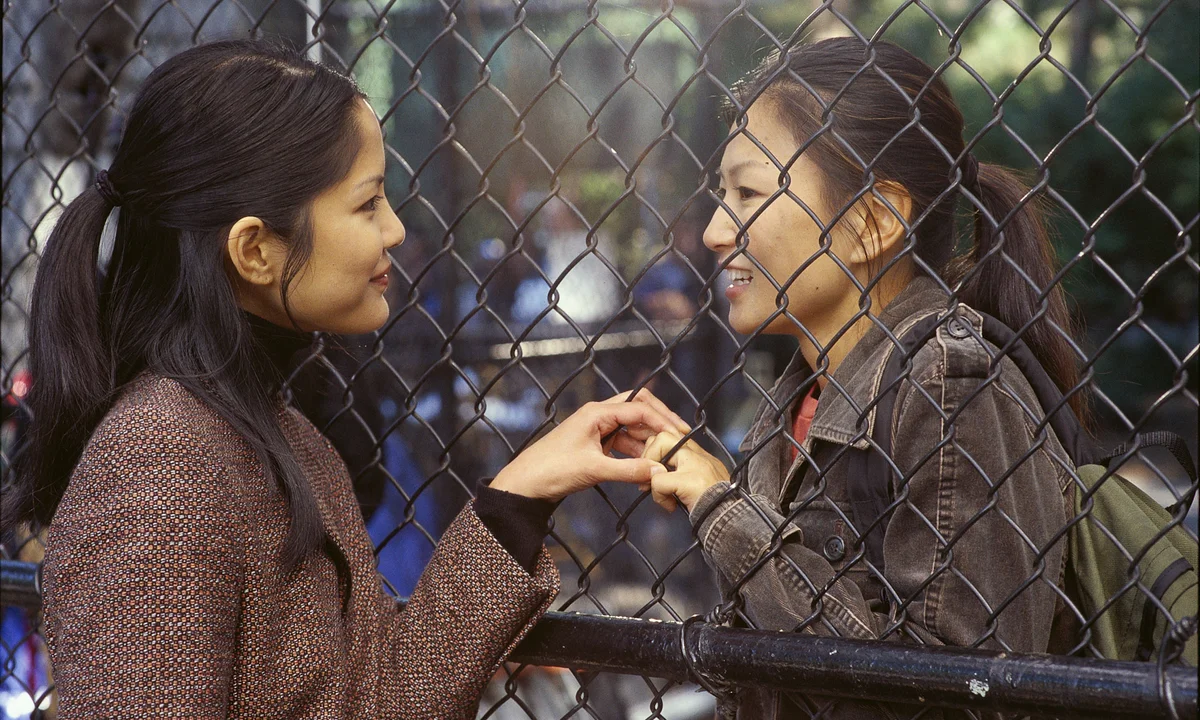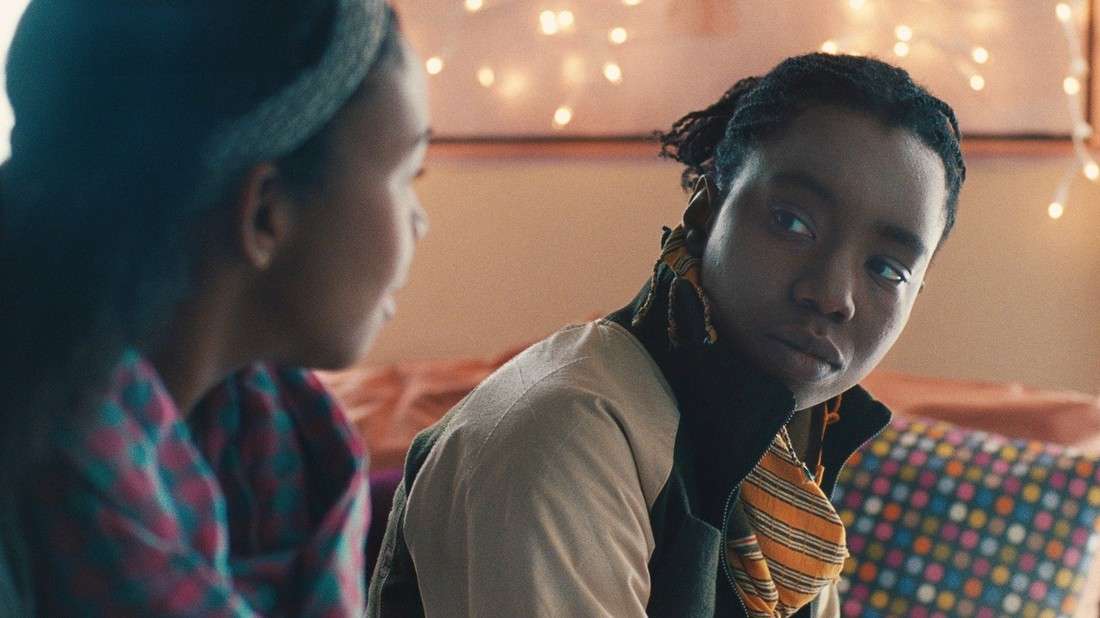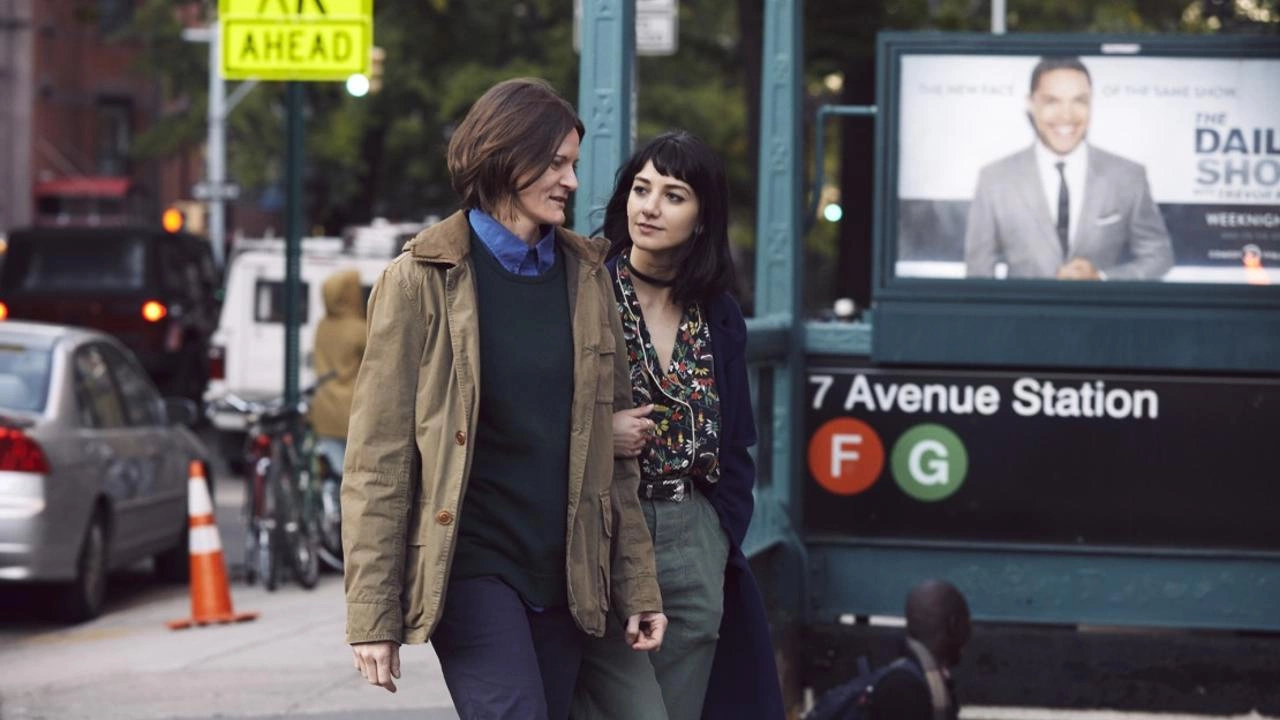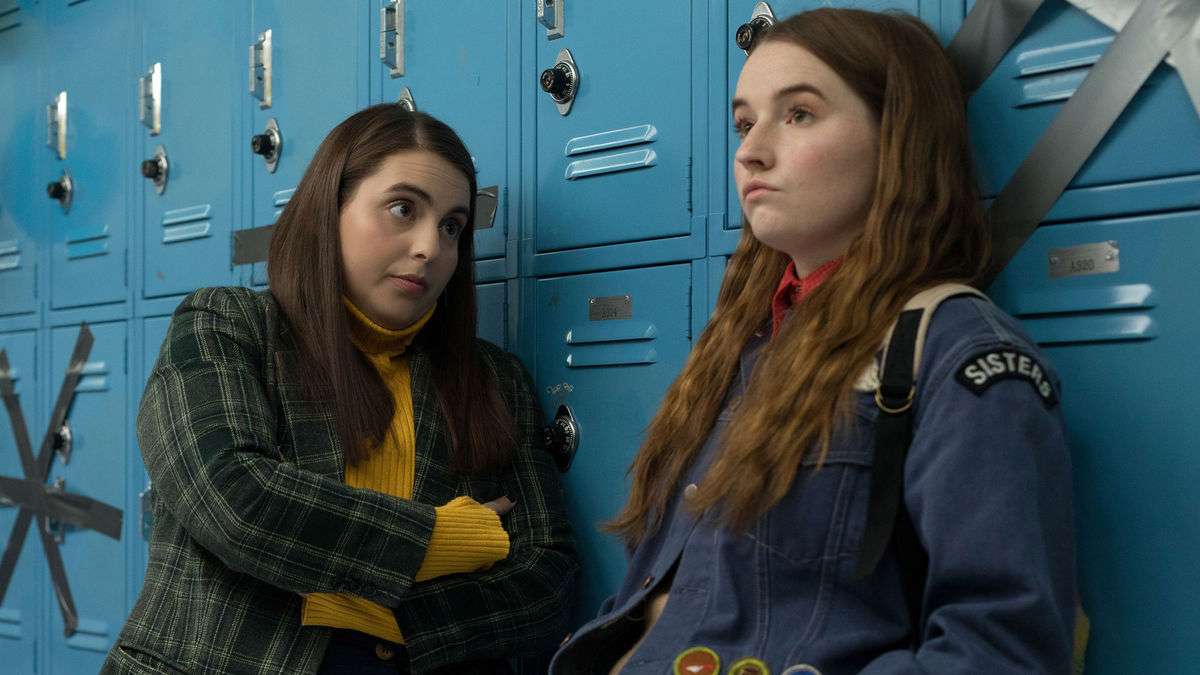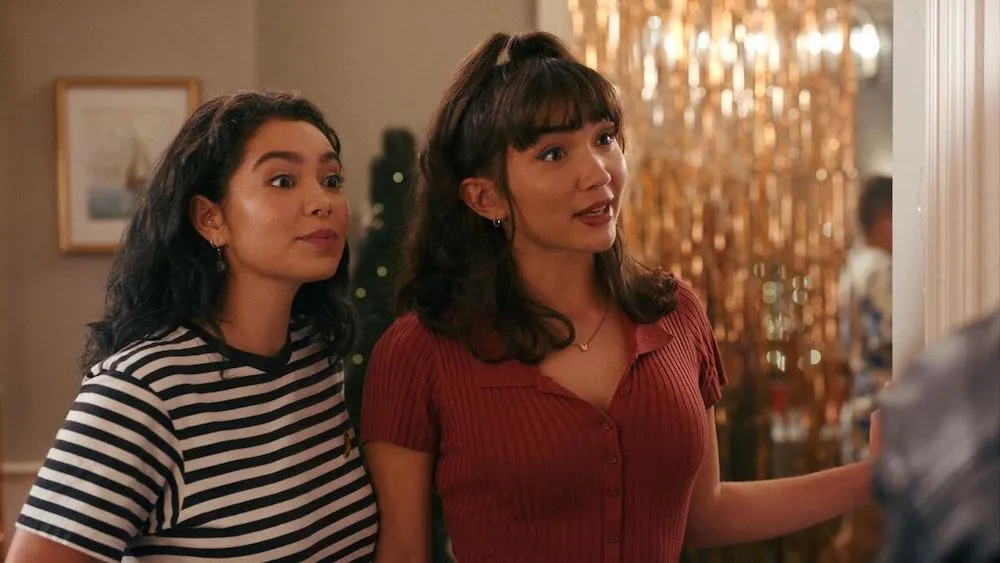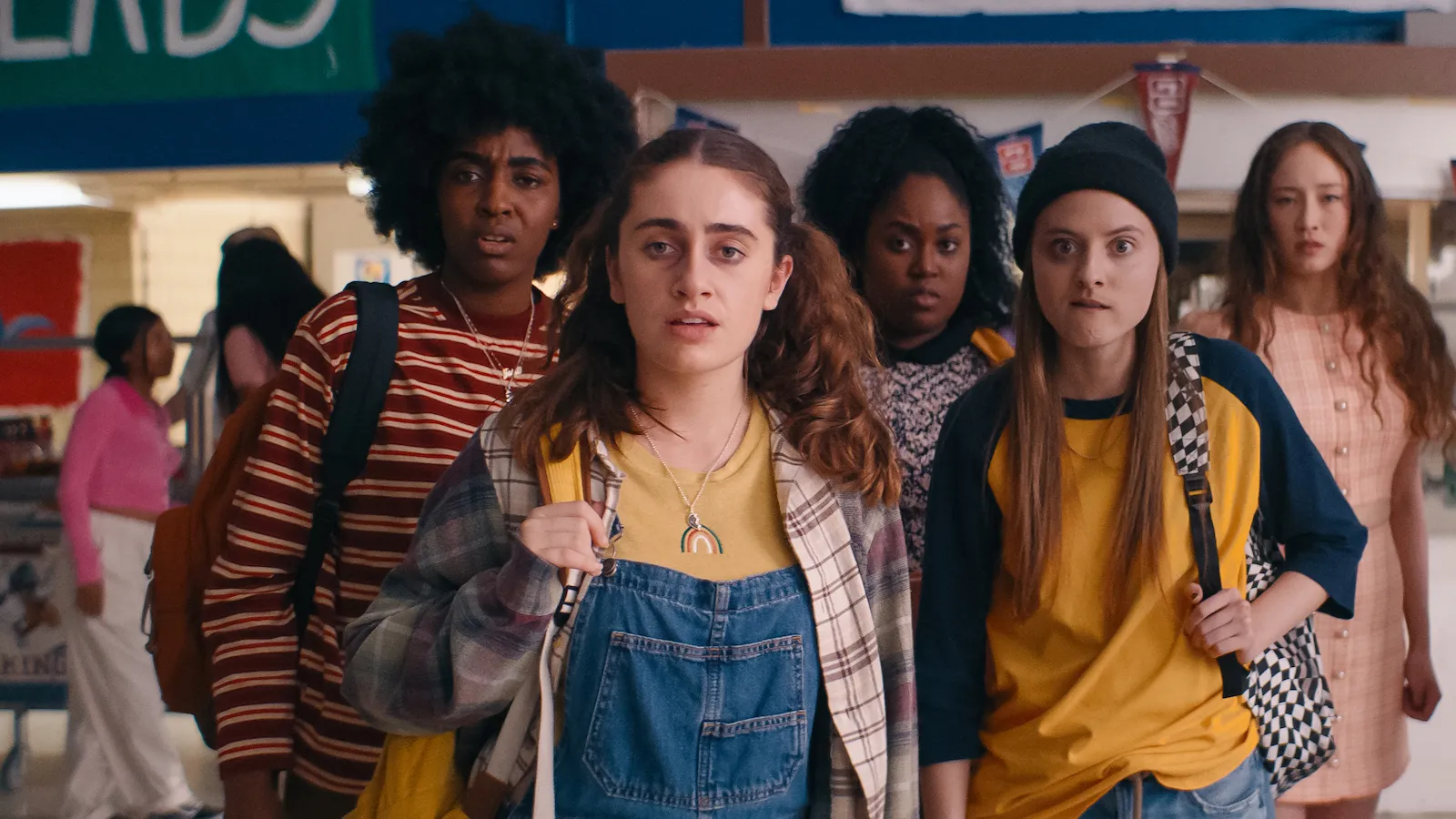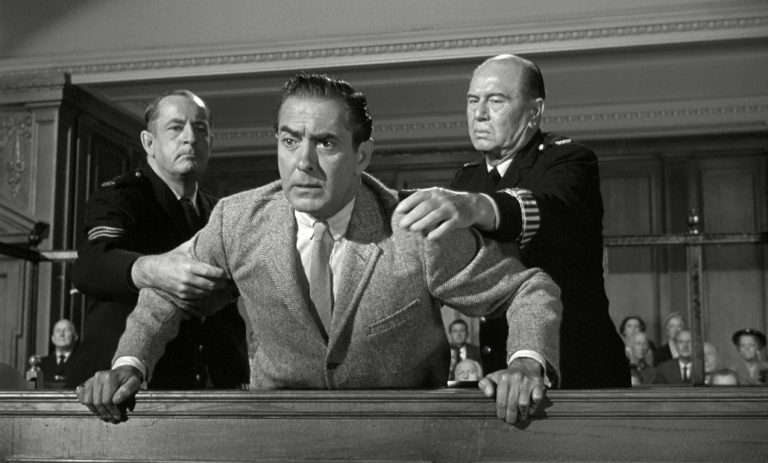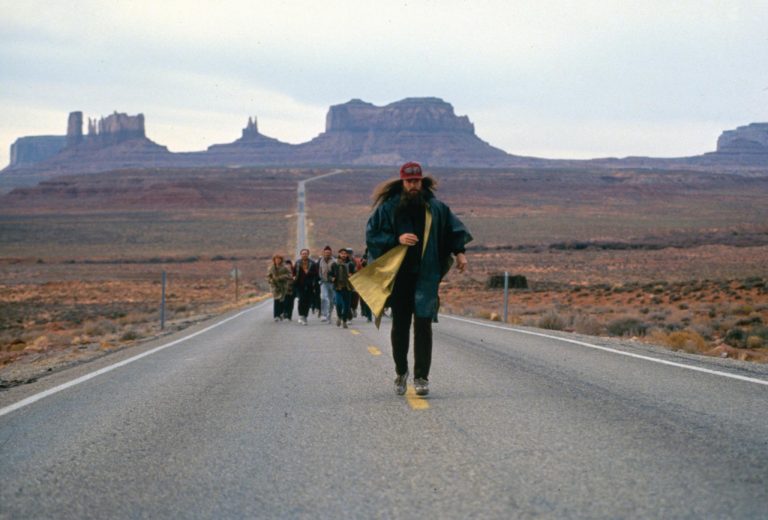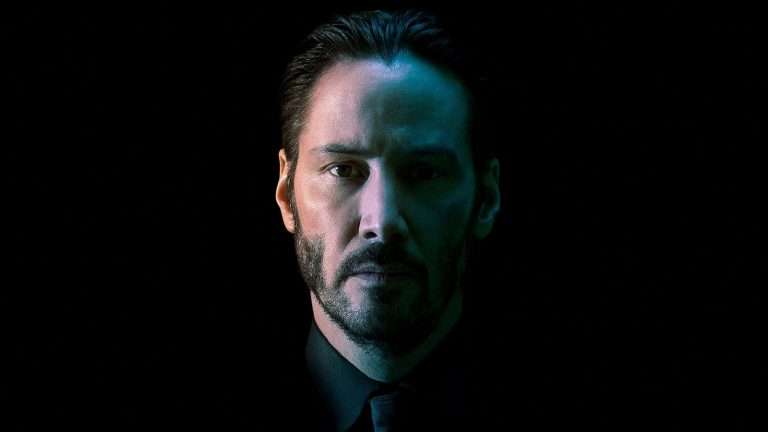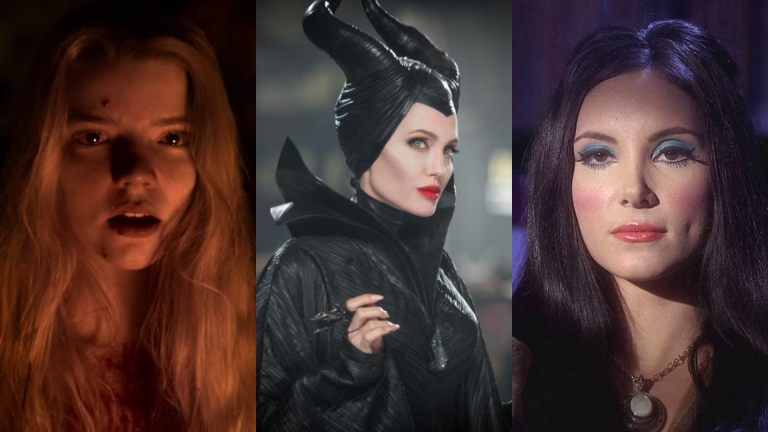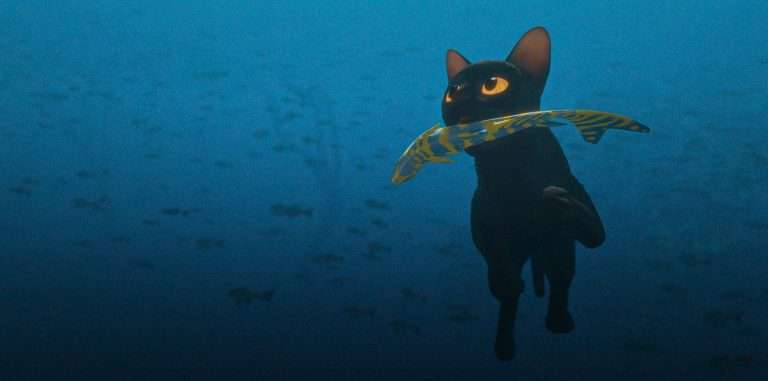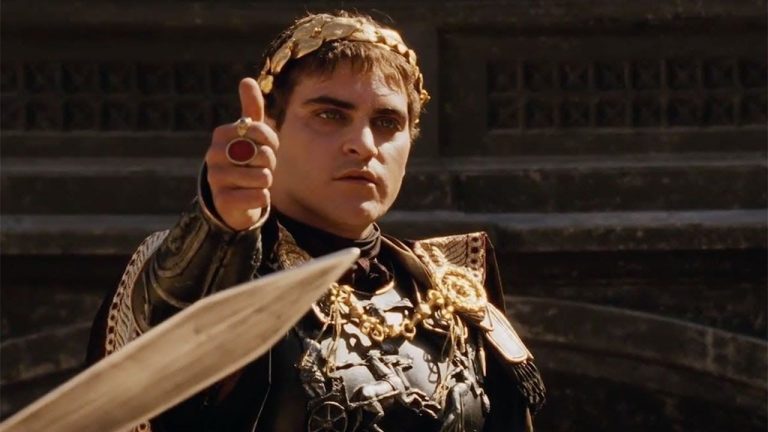While there’s been progress in the variety of gay characters in films, the same can’t be said for lesbian representation. Lesbian characters are often reduced to stereotypes — either hypersexualized or cast as overly masculine and butch. In both cases, they’re frequently sidelined, treated as secondary, and not given the depth or importance they deserve.
Fortunately, female filmmakers are pushing back against these one-dimensional portrayals. They’re creating complex female characters who aren’t objectified but are shown as real people with depth. Their sexuality is just one part of who they are rather than the defining feature of their entire personality. Through the female gaze, viewers are invited to see these characters in a more genuine light, offering a deeper understanding of their inner lives, thoughts, and desires, allowing for more honest and layered representations. Here are some of the best and most fascinating lesbian characters in films directed by women filmmakers:
1. Je, Tu, Il, Elle (1974)
“Je, Tu, Il, Elle” is a French-Belgian film that follows Julie on a journey of isolation and her search for connection. Shot in black and white with a documentary-like feel, the film begins with Julie secluded in her room for over a month. She spends her days moving furniture, writing letters, and eating spoonfuls of sugar straight from the bag. The monotony of her isolation is captured in meticulous detail as she documents her daily actions. When she eventually ventures out, she experiences two different forms of intimacy — first with a truck driver who picks her up hitchhiking and then with her former female lover.
Chantal Akerman, who both directs and stars as Julie, infuses the film with her personal experiences as a young woman. Akerman defies traditional portrayals of women and queer relationships in cinema. One of the film’s standout moments is the prolonged and explicit sex scene between Julie and her ex. This scene is deliberately slow, focusing on the emotional and physical connection without objectifying the characters. Akerman’s exploration of lesbian identity is subtle yet powerful. Instead of relying on heavy dialogue or plot twists, she uses long takes, silences, and minimal action to capture her characters’ raw and unspoken emotions.
2. Go Fish (1994)
“Go Fish” is an indie film that follows Max, a college student in Chicago, as she begins a new romance with Ely while exploring the lives of her close-knit group of lesbian friends. Directed by Rose Troche and co-written with Guinevere Turner (who also plays Max), the film uses a slice-of-life narrative, focusing on the ordinary, everyday joys and challenges of relationships, identity, and community. From the start, when Max reflects on her long, dry spell and the pressure to be in a relationship, “Go Fish” captures instantly relatable moments. Conversations among friends touch on love, sex, and stereotypes, like the dinner party debate over whether a friend can still call herself a lesbian after having slept with a man.
Troche, a lesbian filmmaker, avoids sensationalism in movies, instead creating fully realized and authentic characters. The awkward yet tender connection between Max and Ely beautifully illustrates the excitement and uncertainty of new love, while the overall narrative emphasizes community and self-discovery.
3. Watermelon Woman (1996)
“Watermelon Woman” centers on Cheryl, an aspiring filmmaker working at a video store, who becomes fascinated with a 1930s actress known only as “The Watermelon Woman.” Typecast in stereotypical “mammy” roles, the actress drives Cheryl to create a documentary exploring her real identity and history. Cheryl finds a personal connection with the Watermelon Woman, discovering they share a passion for “movies and women.”
Director Cheryl Dunye, who also stars as Cheryl, provides a genuine look at lesbian life in the movie, especially within the black community and interracial relationships. Cheryl’s relationship with Diana, a white woman, faces scrutiny from her friends. Her friend Tamara accuses Cheryl of wanting to be white while suggesting Diana wants to be black and has a fetish for black women. “Watermelon Woman” is the first film directed by an out black lesbian and emphasizes the importance of unearthing and preserving the stories of black lesbians throughout history. Dunye’s combination of humor, self-reflection, and social commentary, makes “Watermelon Woman” a pioneering work that confronts both the lack of representation and the erasure of black queer figures from mainstream culture.
4. Saving Face (2004)
“Saving Face” stands out as the first film featuring an Asian American lesbian couple. It centers on the life of Wil, a Chinese-American surgeon who juggles her romance with Vivian, a dancer, and her family’s traditional values. The situation becomes even more complicated when her unmarried, pregnant mother moves in with her, intensifying the challenges of keeping her life and sexuality a secret.
The director, Alice Wu, draws from her own experiences as a lesbian in a traditional Taiwanese-American family, adding a layer of authenticity to the film. By focusing on the emotional bond between Wil and Vivan, her female gaze makes the portrayal of their relationship feel authentic and avoids objectifying them. This sincerity is reflected in tender scenes, like their intimate dance in Wil’s apartment. Rather than following typical tragic endings, “Saving Face” has a feel-good ending as Wil finally finds the courage to show affection for Vivian in public, as they dance and kiss in front of family, friends, and their community.
5. Pariah (2011)
“Pariah” is a gripping coming-of-age drama that follows Alike, a 17-year-old black teenager in Brooklyn, as she tries to embrace her identity as a lesbian while living with a conservative, religious family. Alike struggles to balance her sexuality with her family’s expectations, hiding her true self by wearing feminine, fitted clothing at home to appease her mother while changing into more comfortable, androgynous outfits when she’s in spaces where she feels freer. As she explores relationships and learns about sex and her identity, she wrestles with the pressure of keeping this part of herself a secret from her family.
Dee Rees, as a black lesbian filmmaker, brings a personal and authentic touch to “Pariah” as she focuses on the everyday realities of Alike’s life and her quiet resilience as she faces rejection and misunderstanding from her peers and family. The strained relationship between Alike and her family is a central theme, especially with her mother, who is in denial about her daughter’s sexuality. Her mother tries to control parts of her life, from choosing her clothes to setting her up with friends she believes are best for her, convinced that she’s doing what’s right for her daughter. When Alike finally comes out, her mother’s denial turns to anger, leading to a painful and violent confrontation.
Ultimately, “Pariah” isn’t just a film about race and sexuality but also self-acceptance. Watching Alike’s emotional journey of embracing who she truly is feels like a relief, culminating in a moving scene when she tells her father to let her mother know that she was right, “God doesn’t make mistakes.” The film hits home for anyone who has struggled to stay true to themselves while facing the weight of societal and family expectations.
Also related to Lesbian Movies: 10 Unconventional Films About Teenage Girls
6. Women Who Kill (2016)
The dark comedy “Women Who Kill” revolves around exes Morgan and Jean, who, despite their break-up, still live together and co-host a true crime podcast about female serial killers. Tensions rise when Morgan starts dating Simone, a mysterious woman who Jean becomes convinced is a serial killer herself. Ingrid Jungermann, making her directorial debut and playing the lead role of Morgan, brings a fresh and witty perspective on the complexities of lesbian relationships. Her blending of humor and discomfort perfectly captures the awkwardness of staying connected after a breakup.
“Women Who Kill” blurs genre lines, mixing comedy, romance, and thriller elements within a queer context. Jungermann’s portrayal of the characters goes beyond their sexual orientation, making them fully realized individuals with layered personalities. The mystery surrounding Simone’s true identity adds suspense, pushing Morgan to face her own doubts and insecurities, adding depth to this already layered and witty narrative.
7. Booksmart (2019)
This coming-of-age comedy, “Booksmart,” centers on two studious best friends, Amy and Molly, who realize at the end of their senior year that they’ve missed out on the typical high school experiences by always focusing on their studies. Determined to make up for lost time, they decide to cram all these experiences into one final night before graduation.
In her directorial debut, Olivia Wilde skillfully incorporates Amy’s queerness into the storyline without making it the central focus of her character. Amy’s romantic pursuits are portrayed with the same level of humor and awkwardness as any other teenage crush. When she finally musters up the courage to make a move on her long-time crush, Ryan, at a party, the moment perfectly captures the familiar mix of anxiety and excitement that comes with a first romantic encounter — especially for someone who hasn’t been kissed yet. Amy’s experiences are emphasized as universally relatable, regardless of her sexual orientation.
8. Portrait of a Lady on Fire (2019)
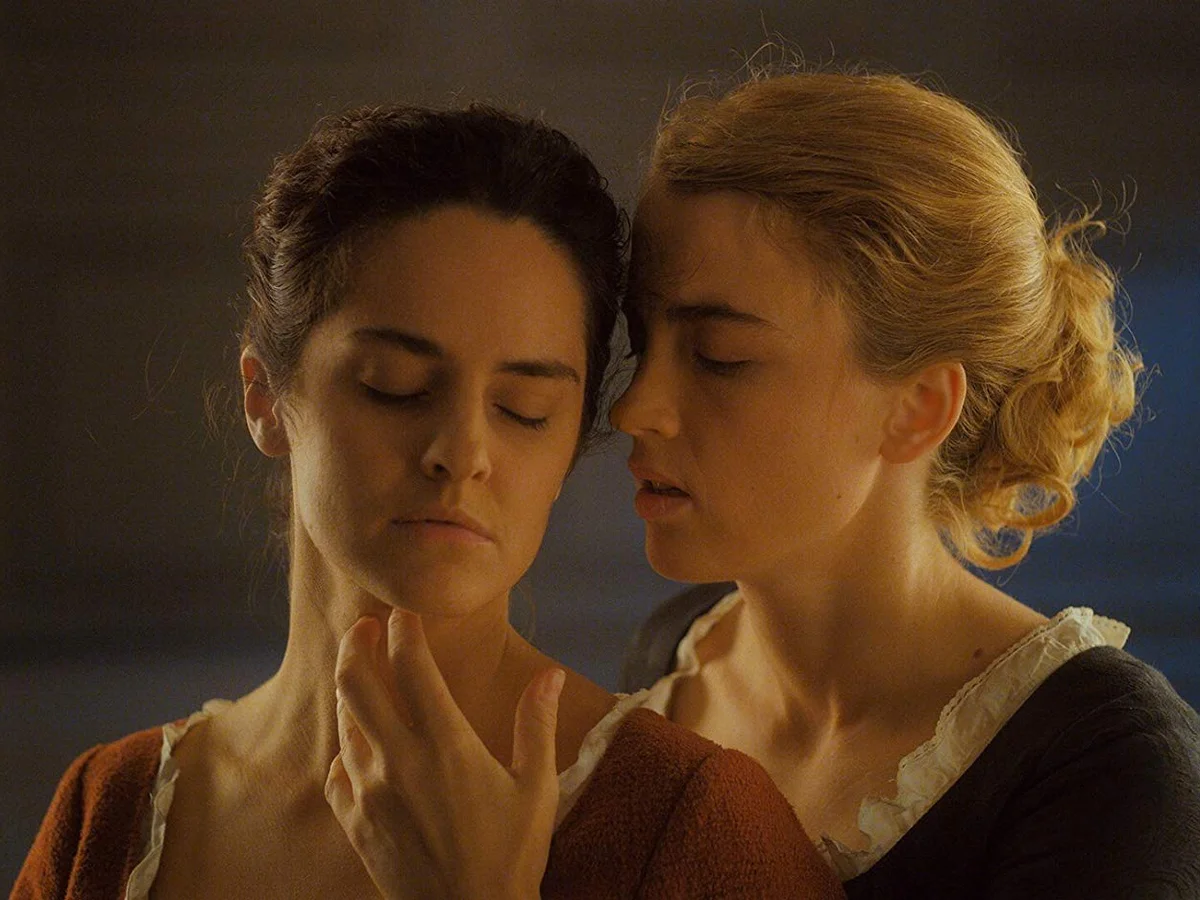
Set in 18th-century France, “Portrait of a Lady on Fire” tells the story of Marianne, a painter hired to secretly paint a portrait of Héloïse, an aristocratic woman about to be married off to a man she’s never met. Under the pretense of being her walking companion, Marianne spends time with Héloïse, and as they get to know each other, their connection deepens into a passionate and romantic relationship.
Director Céline Sciamma delivers a profoundly intimate view of their relationship as she depicts the emotional and physical connection between Héloïse and Marianne. Notably, the film is free from the male gaze, which Sciamma has criticized as a way of controlling lesbians on screen. Instead, Sciamma’s use of the female gaze — a recurring theme in her work — conveys the subtleties of their interactions. This is illustrated through the lingering glances over bonfires and while Marianne is painting Héloïse and the quiet, building tension as they grow closer.
The film showcases the development of Marianne and Héloïse’s relationship in a natural, beautiful way. Héloïse’s question, “Do all lovers feel like they’re reinventing something?” encapsulates their love story, which unfolds without external judgment or dramatic tragedy. The focus is less on their struggle with sexuality and more on their confusion over their feelings, as Héloïse is engaged and Marianne is painting her lover’s portrait for her future husband.
9. Crush (2022)
The romantic comedy “Crush” tells the story of Paige, a high school student who joins the track team to get closer to her crush, Gabby. There’s a diverse representation of LGBT+ characters in the film, particularly lesbians, as different personalities and styles are shown without leaning on tired stereotypes of how lesbian or bisexual women should look or act. Paige’s friends point out that she has her pick of lesbians to choose from, like Chantal, the “cool Wiccan lesbian,” Erin, the “horse gay,” Aya, who’s super popular online, and Amy, the “gateway gay.” Paige’s love interests, sisters Gabby and AJ, also stand out with their unique traits — Gabby is sporty and feminine, while AJ embodies the “brooding, leather jacket” vibe.
Directed by Sammi Cohen and written by Kirsten King and Casey Rackham, “Crush” delivers a lighthearted and wholesome story, drawing from the writers’ personal experiences. In the film, Cohen creates the kind of representation she wishes she had growing up. By presenting a utopian high school where queerness is fully normalized and celebrated, “Crush” subverts conventional narratives and provides a positive depiction of queer love as something ordinary and joyful.
10. Bottoms (2023)
“Bottoms” is a teen comedy based on the friendship of two queer high school students, PJ and Josie, who start a self-defense club as a way to get closer to their cheerleader crushes. Instead of diving into the usual LGBTQ+ film themes of coming out or relationship drama, “Bottoms” takes a refreshing approach by using humor and satire to explore the chaotic and hilarious experiences of its two lesbian leads as they navigate the ups and downs of high school life.
Directed by Emma Seligman, the film benefits from her authentic perspective as a queer woman, which shapes its unique tone and character depth. PJ and Josie’s sexuality is just one part of who they are, as the story focuses more on their personalities and adventures. The film celebrates friendship and identity, with scenes like the chaotic club meetings where PJ and Josie try to handle the unpredictable group dynamics. These moments are filled with comedy and offer a fresh, relatable depiction of gay teens without falling into clichés.
“Bottoms” differs from your typical high school movie because it flips the usual tropes upside down. Rather than following a standard love story, the film emphasizes empowerment and breaking down social norms. The self-defense club becomes a space for PJ, Josie, and their classmates to challenge and shake up their school’s social hierarchy. With Seligman at the helm, the film stays both fun and meaningful, delivering a fresh spin on lesbian character representation in a genre typically dominated by straight narratives.


